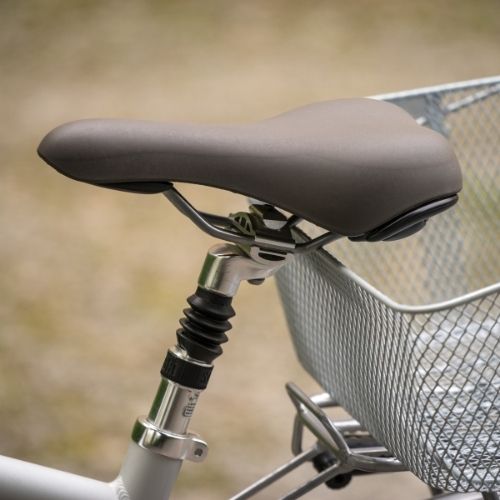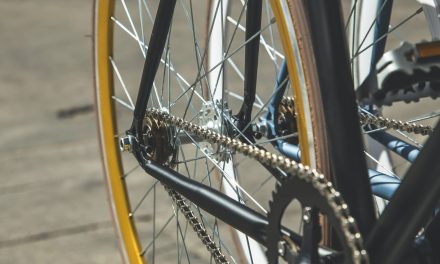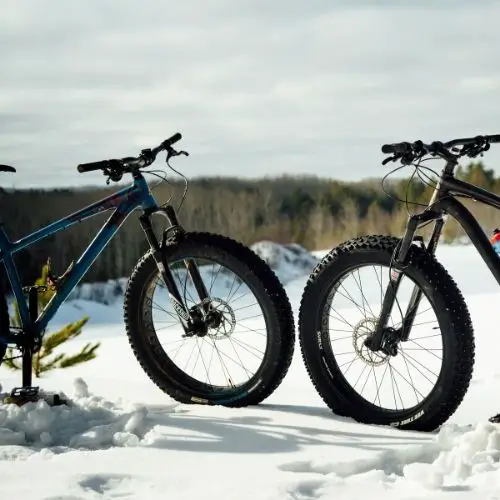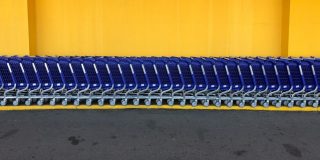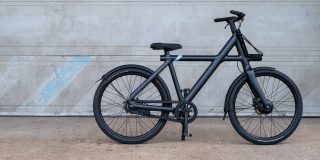The handlebars are a very important part of the bike. Without them, a rider couldn’t steer the bike or change gears. Handlebars do more than just that, though: they also allow you to shift your hands from being on top of the handlebars to underneath them for better protection against weather conditions.
This is especially useful when riding in hazardous weather conditions such as rain or high winds where being exposed out in the open can cause road rash if not severely injured.
So what component do handlebars attach to? That would be called the stem. The stem is that piece on the bike that holds the handlebars, and then clamps onto the steering tube portion of the fork. Without a good stem that is right for your application, you will quickly find that the bike won’t feel like it fits right, even if you have the right handlebars.
What is the stem on a bicycle?
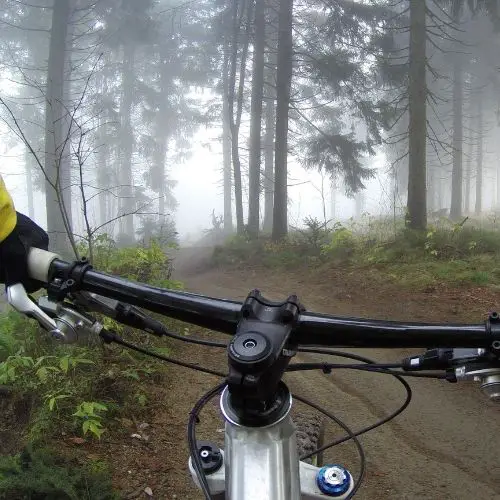
The stem, while normally a forgotten part of a bicycle by entry level riders is an extremely important component of a bike! They come in all different types, styles, colors and more.
Mountain bicyclists in particular all have their own preferences when it comes to a stem. Some like them short, and closer to the steerer tube to keep them a little more upright in their seating position, while others prefer a much longer stem that lets them lay a bit farther down.
You can also have stems that raise up, more than out. This again gives you a higher seating position, and makes things a bit more comfortable.
No matter which one you choose though, the stem is going to be what holds your handlebars, and attaches them to your steering tube of the bike.
Handlebars as Part Of The System
The handlebars are used for two main purposes: controlling how fast or slow you’re going and steering your front wheel around corners so that you avoid accidents. As we’ve just seen in the previous section, controlling your bike’s speed is done by moving internal levers connected to cables, which then change how fast/slow you want your bicycle to move at any given time. If this was all there was to it, though, it’d be pretty boring and useless because if the cable broke or something, you would have to start peddling extra hard to keep your bike moving at a constant speed.
Instead of this being all there is, handlebars are also used for steering and turning. This is done by holding onto them with your hands, which connects them to the system at hand, allowing you to control how fast or slow you’re going and where you’re headed.
As we saw earlier, if we look at a bicycle from above, it’ll look like a large ‘u’ shape: this makes sense because when you move one handlebar outwards, it will cause your whole front wheel to move outwards, meaning that while your front tire is connected directly on top of the frame itself (to help make sure that you don’t go too far off course or accidentally close the gap between your front and rear wheels), turning cause it to move outwards while your back wheel is left behind meaning that with a bit of force, you can start making turns with little effort.
The handlebars are what connect us to our bicycle as they give us control over how fast and how slow we’re going and where we’re heading because they link into the system itself through being held by us, which help keep us in line while moving.
- Threadless Headsets vs Quill Stems: Which is Better?
- Why would you want a shorter bike stem size?
- Can I Turn My Mountain Bike into A Gravel Bike?
Components of a Bicycle

In order to understand how handlebars work, one must first know what they are attached to; and that’s where this article will begin by talking about some basic bicycle components and their roles within the system before moving on looking at how handlebars fit into the system as a whole.
The frame of a bike is one of the most important parts of a bike. The frame can be constructed out of aluminum, steel, or titanium alloys, depending on what type of riding you plan to do. Most bikes are made out of an aluminum alloy these days because it’s lightweight and durable enough for most purposes: this makes sense if you’re going to use your bicycle to get from place A to place B in daily life rather than racing for pennies on Sunday morning. The frames will also typically have lugs protruding from them which are used for attaching components such as the handlebars.
Components Attached To The Frame
Components such as the handlebars are attached to the frame in order to allow you to steer and control your bicycle. Most of this is achieved through putting a steering tube in the middle of the frame that allows you to move it around: this moves your front wheel with it, moving both wheels outwards or inwards depending on how far you move each one. The other function performed by the handlebars is controlling your gears, which will be looked at later down the track.
Brake levers and disc brakes work alongside the handlebars by using them for applying pressure onto brake pads: if you press down on these levers, they activate two pairs of pads on either side of them which come into contact with your rims, causing friction and slowing you down.
Gears are controlled by using the body of the handlebars to move gear levers attached to your gears which then allow you to control how fast or slow your bike is moving at that given time: if you want your bike to go faster, you pull back on the lever which moves a chain onto a different sized sprocket/wheel combination allowing you to move at higher speed.
In turn, if you want your bike to move slower, then all that needs to be done is for the other direction on this same switch being pushed forwards in order to shift onto a larger sprocket/wheel combination and decrease speed. The reason this works is that when you pull back on one of these switches, it’s actually moving an internal cable that is attached to a set of pulleys at the rear of your bike. This moves the gears themselves without you actually moving them yourself, meaning that you can shift from one gear/sprocket combination to another with little effort.

